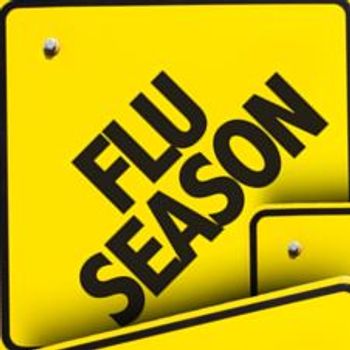
What's New in Treatment for COPD?
The American College of Physicians (ACP) has updated its 2007 COPD clinical practice guidelines.1,2 These updated guidelines focus on screening for and diagnosis and treatment of outpatient stable COPD. They complement the Global Initiative for Chronic Obstructive Lung Diseases (GOLD) guidelines3 to help us appropriately manage COPD patients with evidence-based clinical practice.
Here, I answer some fundamental questions in the context of the updated guidelines, which hold few surprises.
How should COPD be diagnosed?
Spirometry is the test of choice for diagnosing COPD in patients with respiratory symptoms. COPD may be diagnosed by spirometry that demonstrates airflow obstruction that is not completely reversible in an appropriate patient.
Educational interventions introduced in recent years, particularly those from the National Lung Health Education Project, promote the use of office spirometry in primary care and some have recommended screening asymptomatic patients for early airflow obstruction to help encourage smoking cessation.4 The ACP 2011 guidelines reaffirm the group’s 2007 stance opposing the screening of asymptomatic patients. This position is similar to that in guidelines from the U.S. Preventive Services Task Force (USPSTF) Recommendation Statement and stems from concerns about the high cost of mass screening and lack of treatment benefit in asymptomatic individuals.5 Also, there has been some controversy over whether knowing one’s “lung age” would help increase smoking cessation rates, with major organizations, including the ACP and USPSTF, citing a lack a lack of evidence for this premise.
When should treatment be initiated in patients with COPD?
Treatment should be started in symptomatic individuals with FEV1 <60% predicted. There is no evidence that treatment of asymptomatic individuals with COPD would decrease lung function decline or prevent symptoms. Consider therapy for individuals with FEV1 >60% and <80% predicted.1
What are the best pharmacologic therapies for COPD?
Monotherapy with a long-acting β-agonist or anticholinergic agents should be first line treatment for COPD. These agents have been shown to decrease exacerbations and improve health-related quality of life. Combination therapy (specifically long acting β-agonists and corticosteroids) may be considered and may be beneficial in certain individuals.1
What other therapies should be offered to patients with COPD?
Pulmonary rehabilitation should be offered to all symptomatic patients with FEV1
<50% predicted and considered for individuals with FEV1 >50% predicted. Pulmonary rehabilitation has been well studied and leads to improvement in exercise tolerance and quality of life and decreased dyspnea in severe COPD. It is considered standard of care.1,6
Patients with COPD who have severe resting hypoxemia should be prescribed continuous oxygen therapy. This guideline has not changed from 2007. Supplemental oxygen should be given to patients with resting PaO2 ≤55 mm Hg, or in patients with PaO2 between 55 and 59 mm Hg. Patients should wear their oxygen for >15 hours a day.1 The Long-Term Oxygen Treatment Trial (LOTT), sponsored by the National Heart, Lung, and Blood Institut, is currently studying oxygen supplementation in patients with more moderate hypoxemia. Inclusion criteria are an oxygen saturation level between 89% and 93% or exercise desaturations to <90%.
The ACP guidelines don’t mention vaccines, but we should not forget that all adults with lung disease should receive the pneumococcal vaccine at least once and yearly influenza vaccines.
What options may a pulmonologist consider in patients with end stage lung disease from COPD?
Lung volume reduction surgery (LVRS) has been approved for carefully selected patients with severe COPD. The surgery is approved for patients with severe upper lobe predominant emphysema and involves resection of 20% to 30% of the lung to allow for better expansion of remaining lung. Original support for this procedure was based on a 2003 paper published in NEJM by the National Emphysema Treatment Trial Research Group.7
While LVRS surgery did lead to improved FEV1, exercise capacity, and 6-minute walk distance, there was a not insignificant risk of perioperative complications and mortality associated with this treatment approach. It is also very expensive, and only certain centers are approved by Medicare to perform this operation.
Lung transplantation is another option for patients with very severe COPD. This treatment improves quality of life and functional capacity but not necessarily mortality, and it is also extremely expensive. There are many potential complications, including acute rejection, bronchiolitis obliterans syndrome, infections, and malignancies.3
Azithromycin therapy. A recent study examined the role of once-daily azithromycin therapy in patients with COPD who were at risk for COPD exacerbations.8 Azithromycin has antiinflammatory properties in addition to its antibacterial action and so has been gaining popularity for treatment of certain types of lung disease. It is frequently given for bronchiolitis obliterans syndrome after transplantation, and has been investigated in patients who have cystic fibrosis and asthma. The study found a decreased rate of COPD exacerbations in patients treated with daily azithromycin. Unfortunately some patients experienced adverse effects, including a decrease in hearing and an increased risk of macrolide resistance from bacterial respiratory pathogens. It is not yet known if these changes in antibiotic resistance will outweigh the beneficial effects in certain patients.
Bottom line
We can’t reverse established COPD. However, there are many treatment options that improve symptoms, quality of life, and exercise tolerance, and some that decrease exacerbation rates.
References:
References
1. Qaseem A, Wilt TJ, Weinberger SE, et al. Diagnosis and Management of Stable Chronic Obstructive Pulmonary Disease: A Clinical Practice Guideline Update from the American College of Physicians, American College of Chest Physicians, American Thoracic Society, and European Respiratory Society. Ann Intern Med. 2011;155:179-191.
2. Qaseem A, Snow V, Shekelle P, et al. Diagnosis and management of stable chronic obstructive pulmonary disease: a clinical practice guideline from the American College of Physicians. Ann Intern Med. 2007;147:633-638.
3. Global strategy for the diagnosis, management and prevention of COPD Global Initiative for Chronic Obstructive Lung Disease (GOLD). Updated 2010; www.goldcopd.org.September 2011.
4. Ferguson GT, Enright PL, Buist AS, et al. Office spirometry for lung health assessment in adults: a consensus statement from the National Lung Health Education Program. Respir Care. 2000;45:513-530.
5. Screening for chronic obstructive pulmonary disease using spirometry: U.S. Preventive Services Task Force recommendation statement. Ann Intern Med. 2008;148:529-534.
6. Ries AL, Bauldoff GS, Carlin BW, et al. Pulmonary Rehabilitation: Joint ACCP/AACVPR Evidence-Based Clinical Practice Guidelines. Chest. 2007;131:4S-42S.
7. Fishman A, Martinez F, Naunheim K, et al. A randomized trial comparing lung-volume-reduction surgery with medical therapy for severe emphysema. N Engl J Med. 2003;348:2059-2073.
8. Albert RK, Connett J, Bailey WC, et al. Azithromycin for prevention of exacerbations of COPD. N Engl J Med. 2011;365:689-698.
Newsletter
Enhance your clinical practice with the Patient Care newsletter, offering the latest evidence-based guidelines, diagnostic insights, and treatment strategies for primary care physicians.































































































































































































































































































